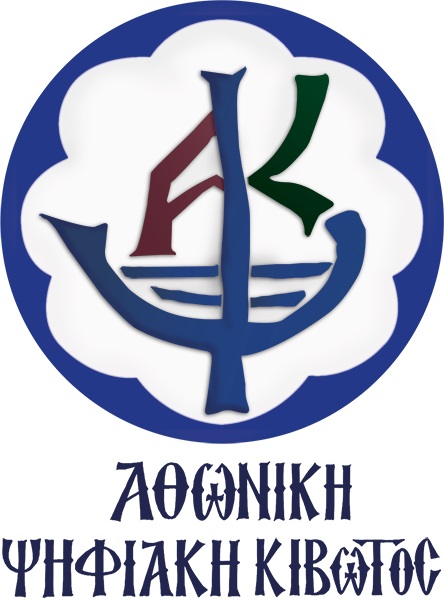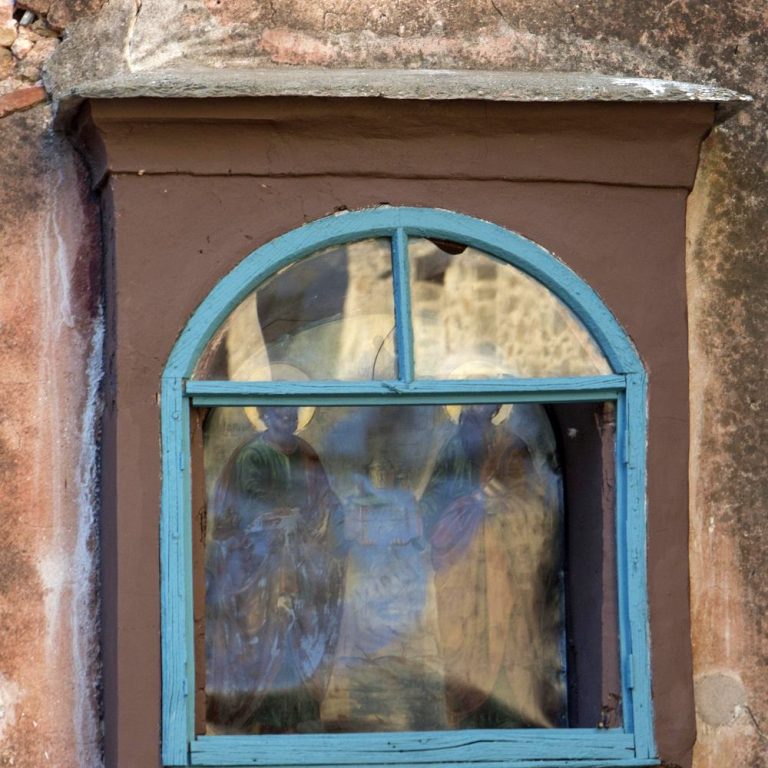Portable Icons
The artefacts of the Holy Karakallou Monastery include important works of art, and consist mainly of a very valuable collection of portable icons from architectural elements and icon screens (i.e. despotic icons, icons from doors of a church sanctuary, epistyle icons, and screen ‘crowning’ crosses), which encompass a long chronological period, from the 14th to the 20th centuries. A large number of icons were created by the hieromonk-artist Damaskinos of Ioannina, who also decorated the cathedral of the Monastery in 1717 as mentioned above, while many other icons are attributed to artists who worked on Mt Athos, such as Dionysios of Fourna, Mitrofanis from Chios, Athanasios and Konstantinos from Korytsa, Beniamin and Makarios II from the workshop of Galatsia, Nikiforos and Mitrofanis from Bizye of Thrace, and others.
The oldest icons of the Monastery are the four which date to the 14th-16th centuries: Χριστού Παντοκράτορα (Christ, the Ruler of All) which is the oldest (the last quarter of the 14th century), St Athanasios of Alexandreias (second half of the 15th century), the Hospitality of Abraam (15th century), and the Embrace of the Apostles Peter and Paul (15th-16th century), an excellent example of the work of the Kretan school.
A large series of icons, some of which appear to have come from the original icon screen (which has not survived) of the Cathedral, come from the beginning of the second half of the 16th century until its end, the same time that the renovation and reconstruction of the cathedral were taking place (1548-1563). One icon stands out among these: The Preparation of the Throne, which is attributed to an artist who worked at Mt Athos in the mid-16th century, under the direct influence of the great Kretan painter Theofanis. The self-framed icon depicts the enthroned Christ in the centre, with the 12 apostles (in bust form) arranged in the space around him, and in the upper centre, the prepared throne.
Among the most interesting iconographic images is that of St Dimitrios on horseback, killing Ioannitzi, the Tsar of the Bulgarians, accompanied by scenes from the saint’s life. The icon is the work of one of the Athonite workshops of the third quarter of the 16th century. A corresponding work is the sanctuary gate, with its representation of the Annunciation, which was created by an Athonite workshop at the end of the 16th century, while a work having particular value is the contemporary epistyle of the original icon screen with scenes of the Δωδεκαόρτου (i.e., the 12 most important feasts of the liturgical year: the Annunciation, the Birth of Christ, the Presentation, the Baptism, the Transfiguration, Palm Sunday, The Raising of Lazarus, the Crucifixion, the Resurrection, the Ascension, Pentecost, and the Dormition of the Virgin).
The Monastery has many 17th century icons representing the artistic production of the Athonite workshops, the style of which assimilates characteristics of northern Greek workshops as well as of the Kretan school, as identified with the work of the Kretan painter Theofanis.
The 18th century is represented at the Monastery by a wealth of icons, often signed, belonging to artists and workshops which were active both within and outside Mt Athos. Among these, ten icons created by Dionysious of Fourna and his workshop for a sanctuary gate and an epistyle stand out, along with about 25 icons attributed to the hieromonk-artist Damaskinos of Ioannia, who also painted the frescoes in the cathedral.
Finally, among the Monastery’s heirlooms are included a large number of portable icons of the 19th century, which were produced by the two most active artistic workshops on Mt Athos at the beginning of the that century, those of the monk-artists from Galatsia and Karpenisi.
The oldest icons of the Monastery are the four which date to the 14th-16th centuries: Χριστού Παντοκράτορα (Christ, the Ruler of All) which is the oldest (the last quarter of the 14th century), St Athanasios of Alexandreias (second half of the 15th century), the Hospitality of Abraam (15th century), and the Embrace of the Apostles Peter and Paul (15th-16th century), an excellent example of the work of the Kretan school.
A large series of icons, some of which appear to have come from the original icon screen (which has not survived) of the Cathedral, come from the beginning of the second half of the 16th century until its end, the same time that the renovation and reconstruction of the cathedral were taking place (1548-1563). One icon stands out among these: The Preparation of the Throne, which is attributed to an artist who worked at Mt Athos in the mid-16th century, under the direct influence of the great Kretan painter Theofanis. The self-framed icon depicts the enthroned Christ in the centre, with the 12 apostles (in bust form) arranged in the space around him, and in the upper centre, the prepared throne.
Among the most interesting iconographic images is that of St Dimitrios on horseback, killing Ioannitzi, the Tsar of the Bulgarians, accompanied by scenes from the saint’s life. The icon is the work of one of the Athonite workshops of the third quarter of the 16th century. A corresponding work is the sanctuary gate, with its representation of the Annunciation, which was created by an Athonite workshop at the end of the 16th century, while a work having particular value is the contemporary epistyle of the original icon screen with scenes of the Δωδεκαόρτου (i.e., the 12 most important feasts of the liturgical year: the Annunciation, the Birth of Christ, the Presentation, the Baptism, the Transfiguration, Palm Sunday, The Raising of Lazarus, the Crucifixion, the Resurrection, the Ascension, Pentecost, and the Dormition of the Virgin).
The Monastery has many 17th century icons representing the artistic production of the Athonite workshops, the style of which assimilates characteristics of northern Greek workshops as well as of the Kretan school, as identified with the work of the Kretan painter Theofanis.
The 18th century is represented at the Monastery by a wealth of icons, often signed, belonging to artists and workshops which were active both within and outside Mt Athos. Among these, ten icons created by Dionysious of Fourna and his workshop for a sanctuary gate and an epistyle stand out, along with about 25 icons attributed to the hieromonk-artist Damaskinos of Ioannia, who also painted the frescoes in the cathedral.
Finally, among the Monastery’s heirlooms are included a large number of portable icons of the 19th century, which were produced by the two most active artistic workshops on Mt Athos at the beginning of the that century, those of the monk-artists from Galatsia and Karpenisi.

